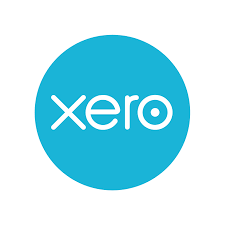The NHS scheme has come under fire as of late after major overhauls in 2015 and the more recent changes to the tapered annual allowance.
But, regardless of its complexity and controversy, the NHS pension scheme is still a significant benefit to those in the health service.
If you work for the NHS, you’ll be part of its pension scheme. As we’ve said, it’s more complex than other pension schemes out there.
Here’s how the scheme works and tax considerations to be aware of – including the annual allowance and contribution rates.
It’s never too early to start pension planning and finding out exactly what you’re entitled to is the first step in securing a comfortable life in retirement.
The NHS pension scheme
Like other pension schemes, all NHS workers are automatically enrolled onto the NHS pension scheme, although they can opt out if they wish.
The scheme will also provide a lump sum and pension benefits to your family in the event of your death.
The threshold income limit for contributions into the NHS pension scheme is £200,000, which means your pension contribution annual allowance won’t be tapered if you earn £200,000 or less.
There are three ‘sections’ of the NHS pension scheme – the 1995 section, the 2008 section and the 2015 section. It’s easier to think of these as their own separate schemes.
All three are defined benefit pensions, in which the amount you get is based on your salary and how long you have been on the scheme.
The 1995 and 2008 sections both pay a final salary pension, meaning the amount you get is based on your salary just before you retire.
The 2015 scheme, on the other hand, pays out money based on your career average earnings.
Which NHS section applies to you?
Newly enrolled workers will be put straight onto the 2015 section – but what if you have been saving since then?
When the 2015 section was introduced, some people were moved off the 1995/2008 sections into the new one, being offered either full or tapered protection.
Full protection means you will stay in the more generous final salary scheme. You will qualify if, on 1 April 2012, you were:
- over your normal pension age, or 10 years or less from your normal pension age.
- and in active membership of the scheme between 31 March 2012 and 31 March 2015.
Tapered protection means you move to the 2015 section but from a date after 1 April 2015. You qualify if, on 12 April 2012, you were:
- between 10 years and 13 years and 5 months away from your normal protection age
- and in active membership of the scheme between 31 March 2012 and 31 March 2015.
Use this calculator to arrive at your protection status if you need a visual aid.
How much do I contribute to my NHS pension?
Contributions rates into the NHS pension have been fixed for a number of years now and apply at the same rate to both the 2015 and 1995/2008 schemes.
At the time of writing, the Government is consulting on proposed changes to contribution rates from 2022/23 onwards, however.
Contributions are currently:
| Tier | Pensionable pay | Contribution rate from 1 April 2015 |
| 1 | Up to £15,431.99 | 5.0% |
| 2 | £15,432.00 to £21,477.99 | 5.6% |
| 3 | £21,478.00 to £26,823.99 | 7.1% |
| 4 | £26,824.00 to £47,845.99 | 9.3% |
| 5 | £47,846.00 to £70,630.99 | 12.5% |
| 6 | £70,631.00 to £111,376.99 | 13.5% |
| 7 | £111,377.00 and over | 14.5% |
Be sure to double-check these rates against the latest rates published by the NHS Business Services Authority.
The employer’s contribution rate changed from 14.38% to 20.68% on 1 April 2019, which includes a scheme administration charge of 0.08%.
Talk to us about your retirement plan.


